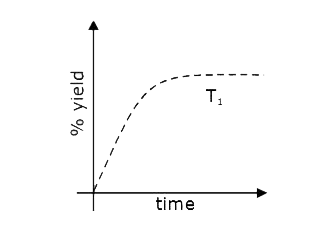The Haber's process of production of ammonia involves the equilibrium:
N2(g)+3H2(g)⇔2NH2(g)
Assuming ΔH∘ and ΔS∘ for the reaction do not change with temperature, which of the statements is true?
(ΔH∘=−95kJandΔS∘=−198JK−1)
A
Ammonia dissociates spontaneously below 500 K
B
Ammonia dissociates spontaneously above 500 K
C
Ammonia dissociates at all temperatures.
D
Ammonia does not dissociates at any temperatures.
Video Solution
Text Solution
The correct Answer is:B
ΔG∘=ΔH∘−TΔS∘=−95×1000−500×(−190)=−95000+95000=0
Upto T=500 K the synthesis of ammonia is spontaneous. After 500 K synthesis becomes non-spontaneous, ammonia will dissociate spontaneously.
|
Similar Questions
Knowledge Check
For the reaction
N2(g)+3H2(g)⇔2NH3(g),ΔH=?AΔE+2RTBΔE−2RTCΔE+RTDΔE−RTWhich of the following will not change the concentration of ammonia in the equilibrium
N2(g)+3H2(g)⇔2NH3(g),ΔH=−xkJAincrease of temperatureBincrease of volumeCdecrease of volumeDaddition of catalystThe % yield of ammonia as a function of time in the reaction N2(g)+3H2(g)⇔2NH3(g),(g)ΔH<0 at (P,T1) is given below
 A
A B
B C
C D
D
Increased pressure shifts the equilibrium of the reaction: N2(g)+3H2(g)↔2NH3(g) so as to
View SolutionWhich of the following is correct for the reaction?
N2(g)+3H2(g)⇔2NH3(g)
View SolutionIn reaction N2(g)+3H2(g)⇔2NH3(g),ΔH=−93.6kJ/mole, the yield of ammonia does not increase when
View SolutionWhich of the following is not true for the equilibrium reaction
N2(g)+O2(g)⇔2NO(g), ΔH=180kJmol−1
View SolutionWhich of the following is correct for the reaction?
N2(g)+3H2(g)⇔2NH3(g)
View Solution